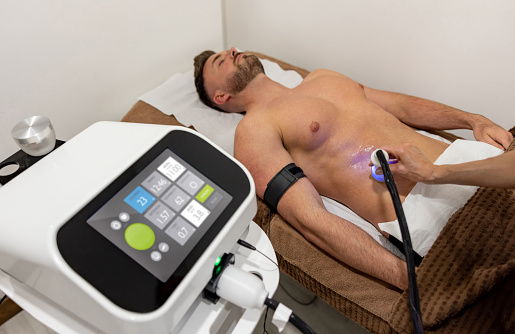When you have a treatment with ultrasonic Cavitation, some food guidelines are to follow. The following foods are fine:berries, kale, celery, ginger root Celery is excellent because it balances your sodium and potassium levels. Kale is rich in vitamin C and magnesium, which are lost when fat is removed. Ginger root will soothe your sore throat and even help you fight a cold or flu. Berries have many antioxidant properties and can even help prevent diabetes.
Ultrasonic Cavitation is used in many of the treatments used at Ideal Image.
The benefits of this procedure include enhancement of cellulite, tightening the skin, and regeneration of collagen.
The main goals are to:
- Reduce fat cells(natural cellulite treatment)
- Enhance skin (cellulite reduction) and softness by reducing overweight cell size and volume.
- Increase collagen production (skin tightening) and strength.
- Improve blood circulation through the body by increasing tiny blood vessels
Ultrasonic Cavitation helps in reducing the fat in body tissues.
It helps shrink the size of fat cells and improves blood circulation. This procedure is safe, and there are no side effects. The system is secure; no side effects and downtime are associated with the ultrasound cavitation treatment. The procedure is not a total fat removal procedure. When the fat cells are removed, they are replaced by collagen as they regenerate.
Ultrasonic Cavitation is a non-invasive treatment.
The procedure helps in reducing the size and volume of fat cells, thus resulting in the loss of cellulite or fatty deposits from the body’s skin. It uses sound waves to penetrate the skin and effectively split up fat cells. It is performed with the help of ultrasound machines which produce supersonic waves – these waves travel at very high speeds and generate heat inside fat cells, which result in the shrinking of these cells.
Ultrasonic Cavitation can be used for cellulite treatment.
The procedure is conducted quickly, and it is more effective for reducing fat from more significant areas of the body like thighs, thighs, hips, and buttocks. It results in tightening the skin on your body and makes it more flexible. It also helps in collagen regeneration to avoid sagging of skin and improves blood circulation to help you look younger.
What is Ultrasonic Cavitation?
Cavitation refers to the formation of tiny bubbles or cavities in a liquid or gas by a process known as cavitation bubbles. The appearance of such bubbles may occur when two drinks are mixed, and the pressure on one fluid is then reduced, causing it to vaporize rapidly.
When the pressure is increased on the smaller volume of liquid left, the vaporization of this liquid occurs faster, and some gas may be produced. The vaporized fluid will occupy a much larger volume than the original fluid and displace its counterpart, forming tiny voids. Further expansion of these cavities will appear with an abrupt release of latent heat and possibly sound.
How is Ultrasonic Cavitation performed?
Ultrasonic Cavitation is performed using a dental ultrasonic scaler when the doctor is removing plaque. When the scaler tip is placed on the plaque, it emits ultrasonic waves that destroy the bacteria on your teeth. It does not damage your gums or teeth but instead works to eliminate bacteria that can lead to periodontal disease. The treatment takes about five minutes and can be done in conjunction with routine dental procedures, including cleanings and fillings.
How does Ultrasonic Cavitation work to remove fat cells?
Ultrasonic energy is delivered deep into the body to break down and liquefy fat cells. Once the fat cells are liquefied, they’re sucked out of the body through our natural lymphatic system. Fat cells do not grow back, and the body’s natural process of breaking down and eliminating dead fat cells continues over time until you’re left with a smoother, more contoured figure.
What can we expect during my treatment?
During your treatment, you will be asked to wear protective eyewear. The doctor may use local anesthesia or a pain reliever to reduce any discomfort you may have. Treatments typically last between 30 and 60 minutes, but this will depend on the treated area. The treatment is performed inside the office, although a removable cooling device may be used after the treatment to reduce any swelling and discomfort.
How much does Ultrasonic Cavitation cost?
The cost of Ultrasonic Cavitation depends on the size of the area being treated and how many sessions are needed to achieve ideal results. The price can also vary from clinician to clinician, so be sure to discuss your needs with your provider before making a final decision.

